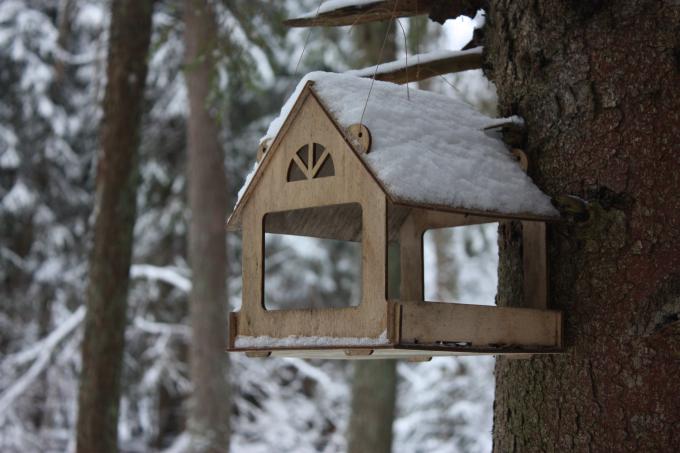Photo by Eugenia Romanova from Unsplash
In winters, Northern Cardinal birds find fewer natural resources to feed themselves. That's the time to help them by installing a feeder in your garden.
More people are rediscovering the joys of having a garden and opening their homes to welcome and feed birds. That's because people these days are more sensitive to biodiversity and the preservation of the environment.
Why Install A Northern Cardinal Feeder?
Because in winters, there is a shortage of food in nature, when the birds need more calories to face the falling temperatures. As these birds feed on the ground (they love sunflower seeds), a cardinal-only bird feeder should be placed high up in the garden and on a balcony.
Northern Cardinal birds will feast there at least until spring.
Free-Standing, Suspended, Or Wall-Mounted Feeder
Our first choice of the cardinal only bird feeder is the table feeder if you don't have trees in your yard. You just have to install it on a stand wherever you want and then supply it regularly.
Another possibility is the hanging feeder - it can be hung on a tree near your windows to admire the comings and goings of the little birds.
There are also wall feeders - transparent, equipped with a suction cup; fixing system also appears very practical, especially if you don't have a garden, because they easily stick to windows. The cardinal-only bird feeder can be installed even on a balcony.
A Different Feeder Depending On The Feed
The choice of feeders for cardinals will also depend on the food you intend to put there. In freezing weather, the birds will prefer fat balls. When the temperature is milder, seeds are enough. Therefore, choose to buy two different feeders or opt for a multifunctional one that includes several distinct parts to accommodate any type of food.
The Tray Feeder
The most classic is undoubtedly the tray feeder with or without a roof that looks like a small house. Easy to use, you place food (seeds, fruit, blocks of oil-based vegetable or animal fat with beef tallow, etc.) on the tray, and the birds will love to feed there.
Silo Feeders
There are also silo feeders (or distributors) of different shapes that can be installed in windows and perches. These distributors or silos are intended for seed mixtures or sunflower seeds. If you choose to feed the Northern Cardinal birds sunflower, a food rich in lipids and proteins, you can opt for silos mesh.
The advantage of this type of feeder? The food is sheltered there from the weather. Also, it has a large storage capacity (useful if you need to be away) to adapt to the level of seeds.
The seeds flow out little by little to be pecked by the birds. It's worth noting that some distributors also provide protection against pests.
Finally, you can choose suspended feeders for vegetable or animal fats (balls and fat loaves) which attract birds.
Feeder Material and Design
- Wooden Feeders: Wooden feeders blend well with the garden, and treated wood requires minimal maintenance.
- Metal Feeders: These feeders can be colored for a decorative aspect and are resistant to the passage of time.
- Plastic Feeders: Easy to maintain and inexpensive.
- Bamboo Feeders: They are trendy too, and for those who want to go eco-friendly.
There are all shapes and styles on the design side, with some innovations. There is something for everyone; for example, there are feeders with the metal acorn shape.
Northern Cardinal Feeders: Some Tips You Should Know
- By arranging the feeder at an optimum height (between 1.50 m and 2 meters), you will protect the birds from predators, especially cats.
- Position them in a sunny place, sheltered from wind and humidity.
- If you have a large garden, place several different feeders (one for fat balls, one for seeds, etc.) to attract all types of birds (not just Northern Cardinals), but position them at a reasonable distance from each other
- Remember to add a freshwater point; birds also need to drink.
There you have it; we are glad you're taking a step to help these fragile and cute animals.
Article provided by Donald Hobson | Freelance Writer

